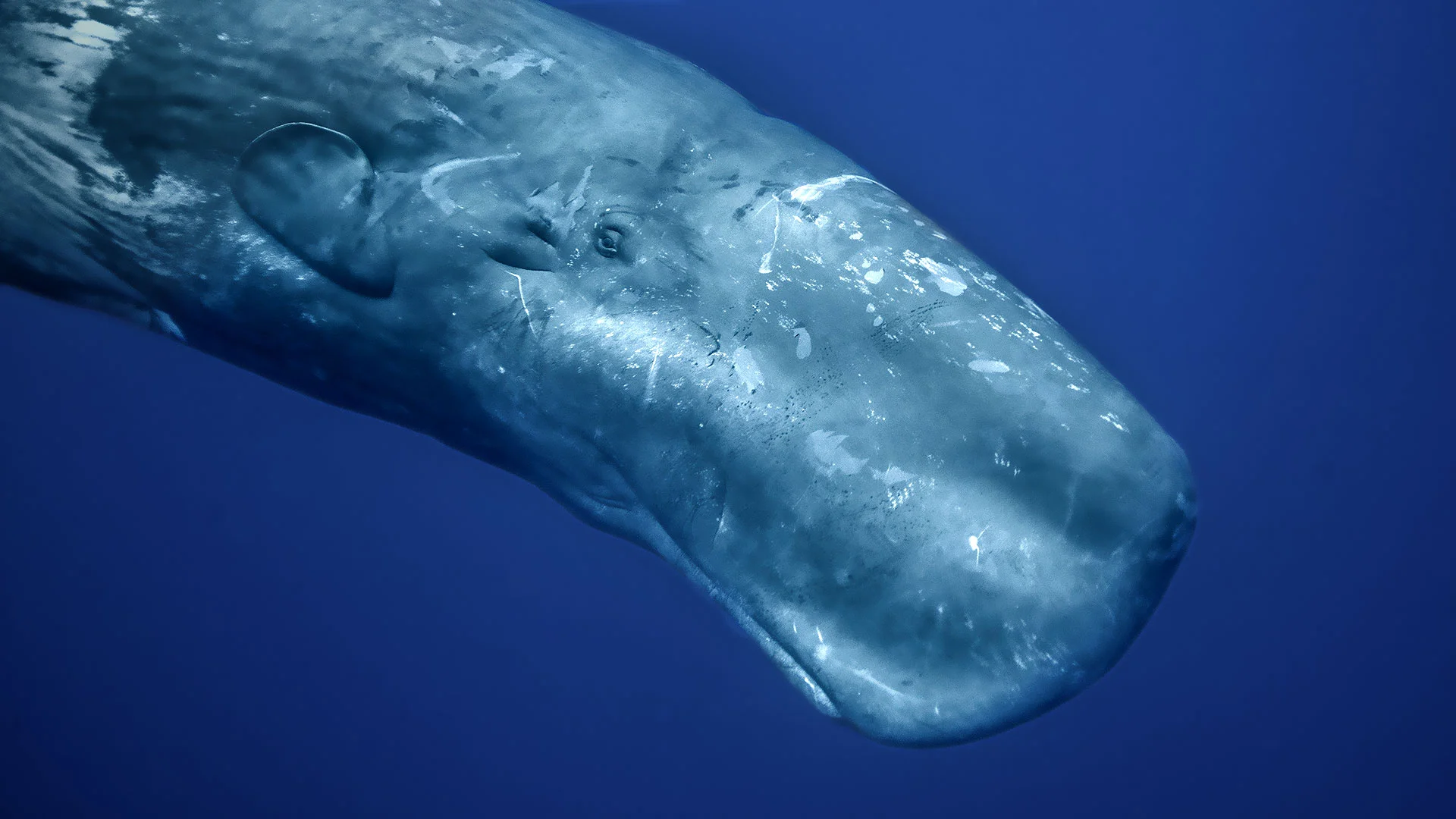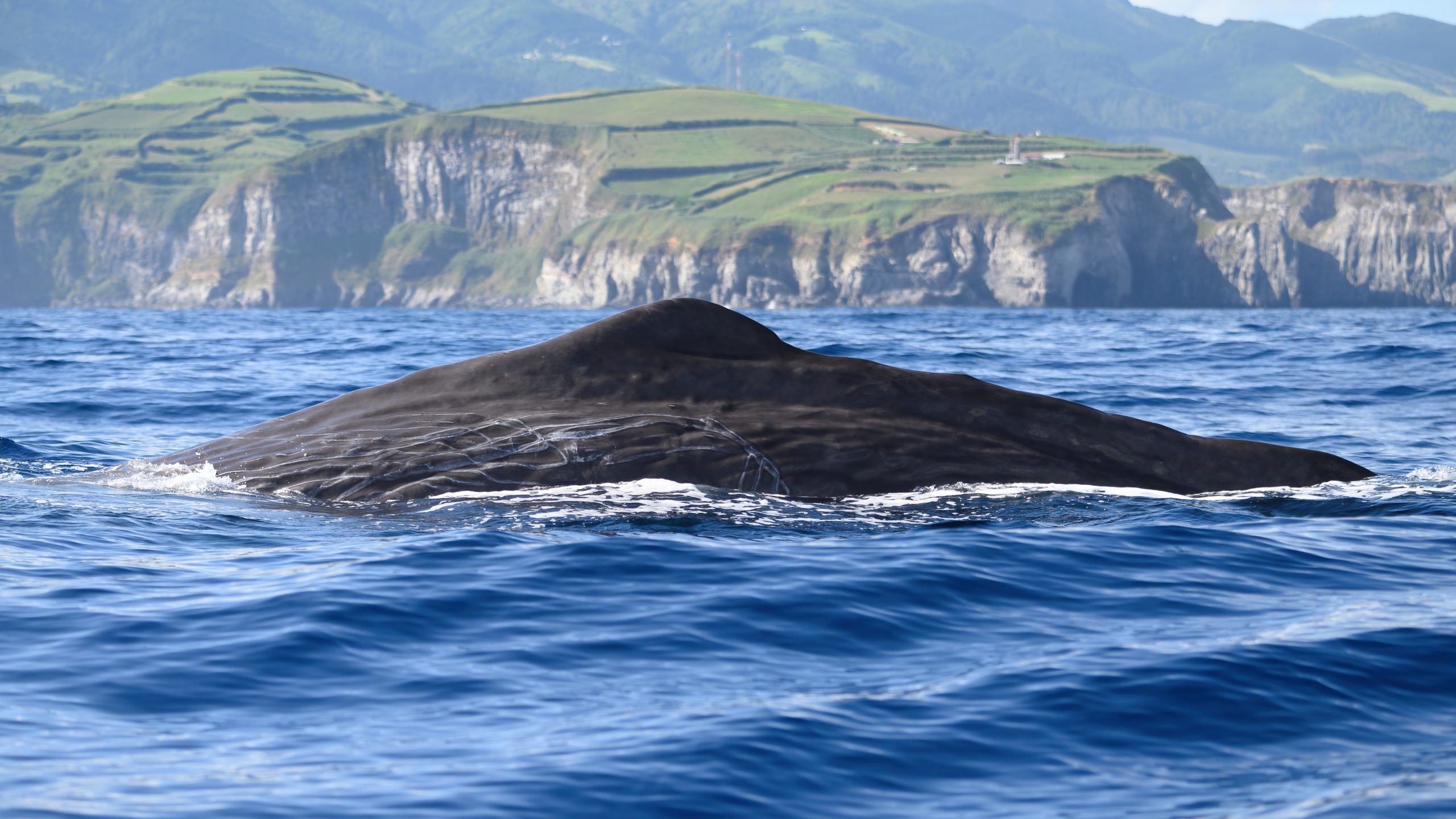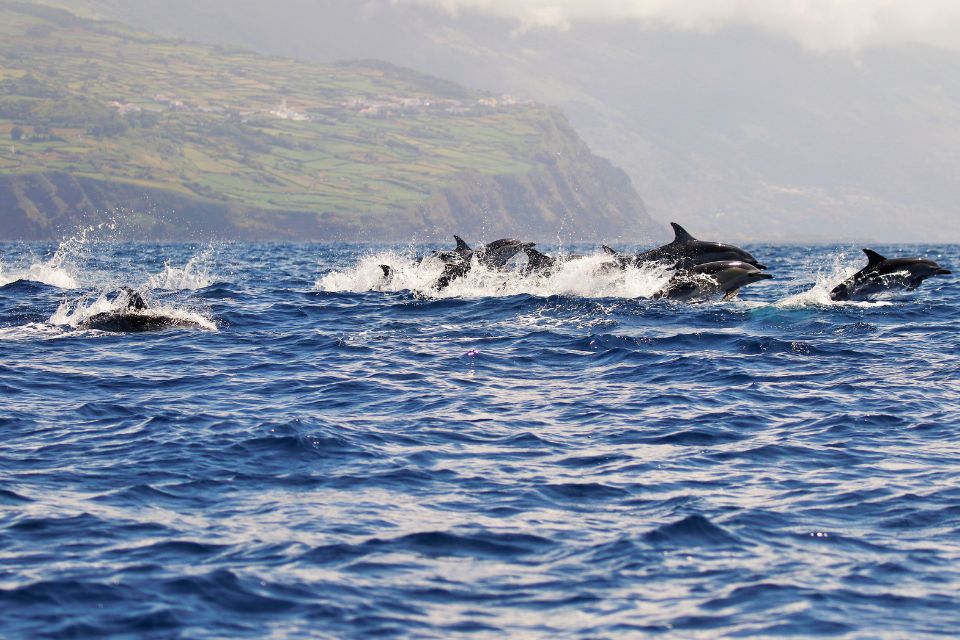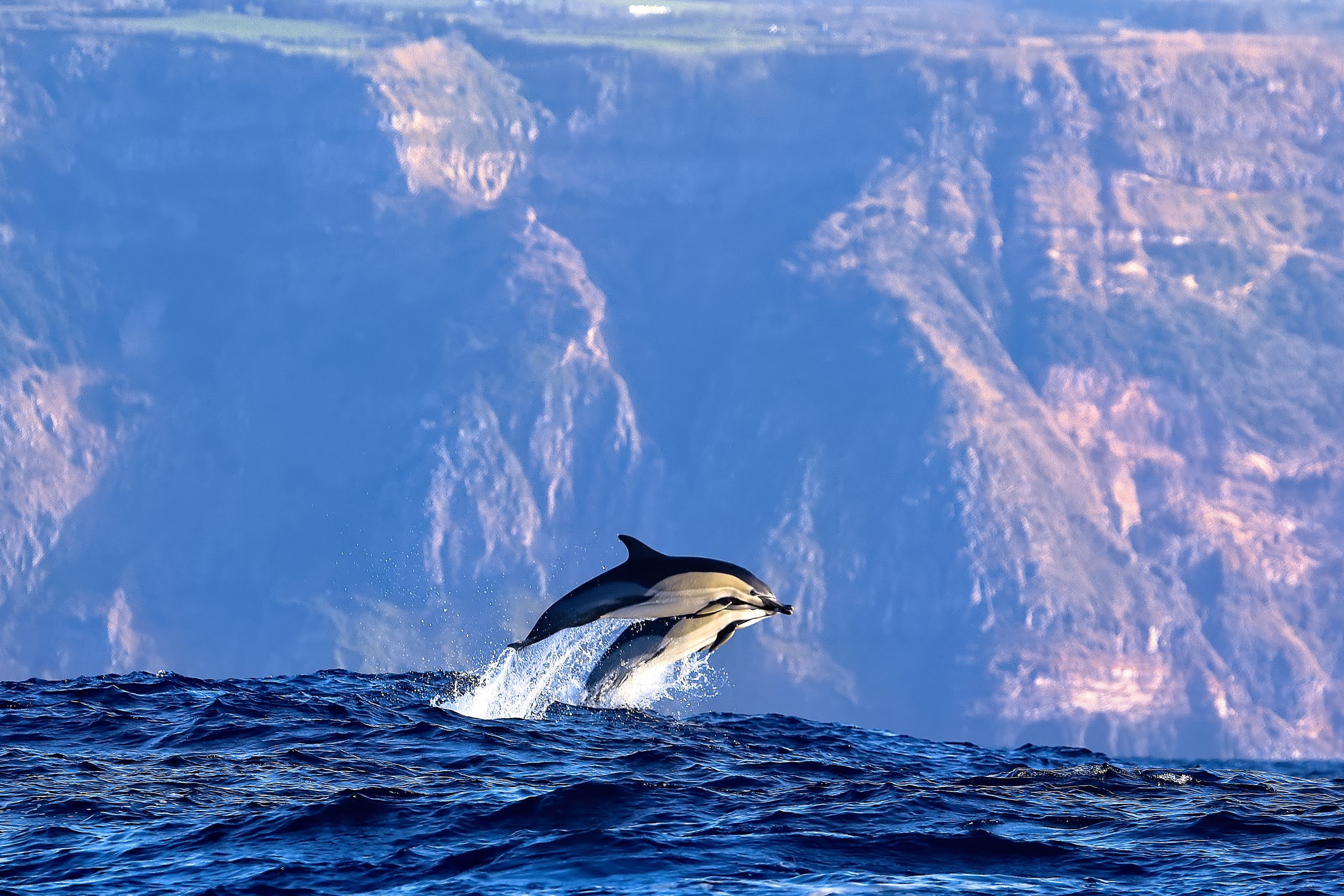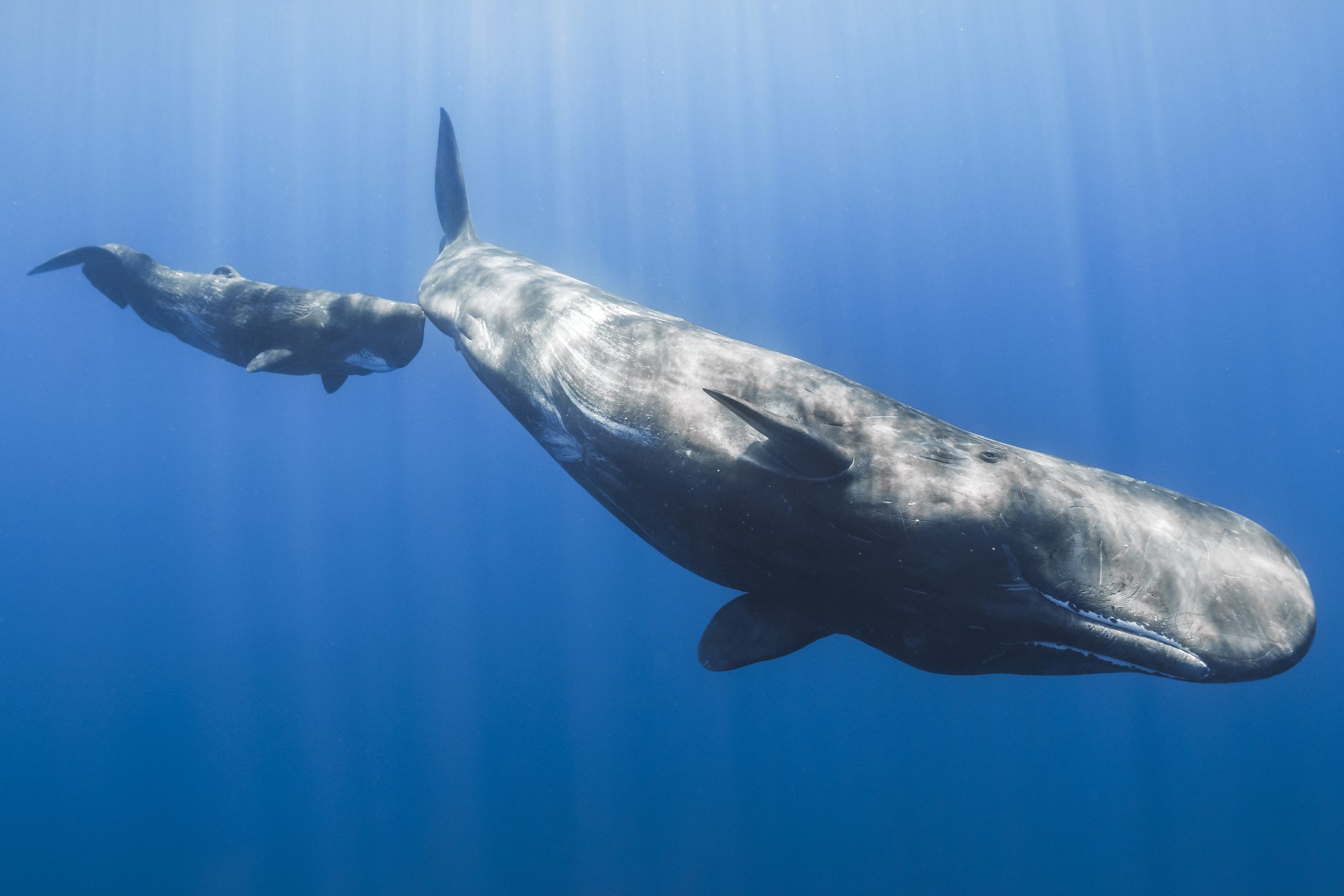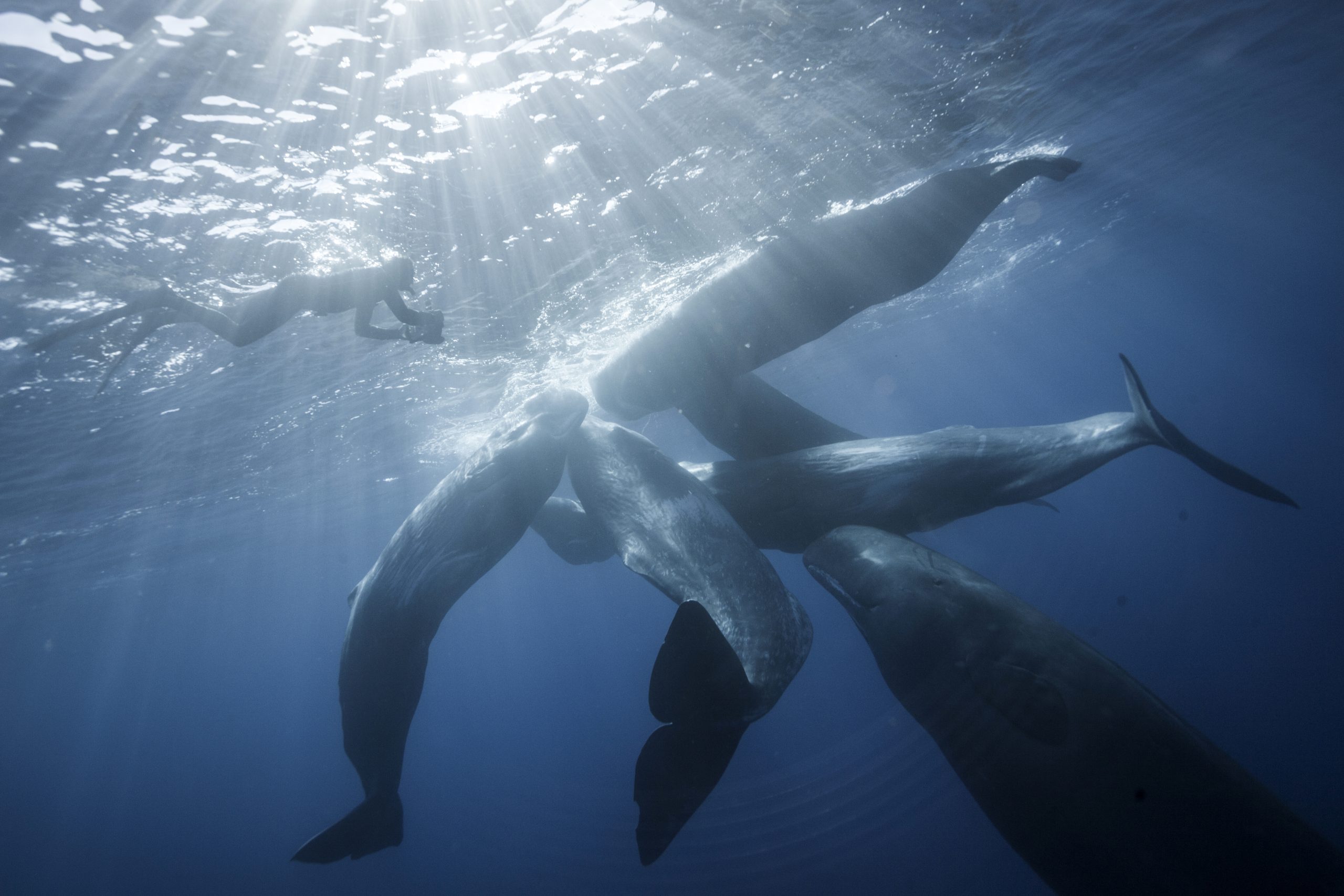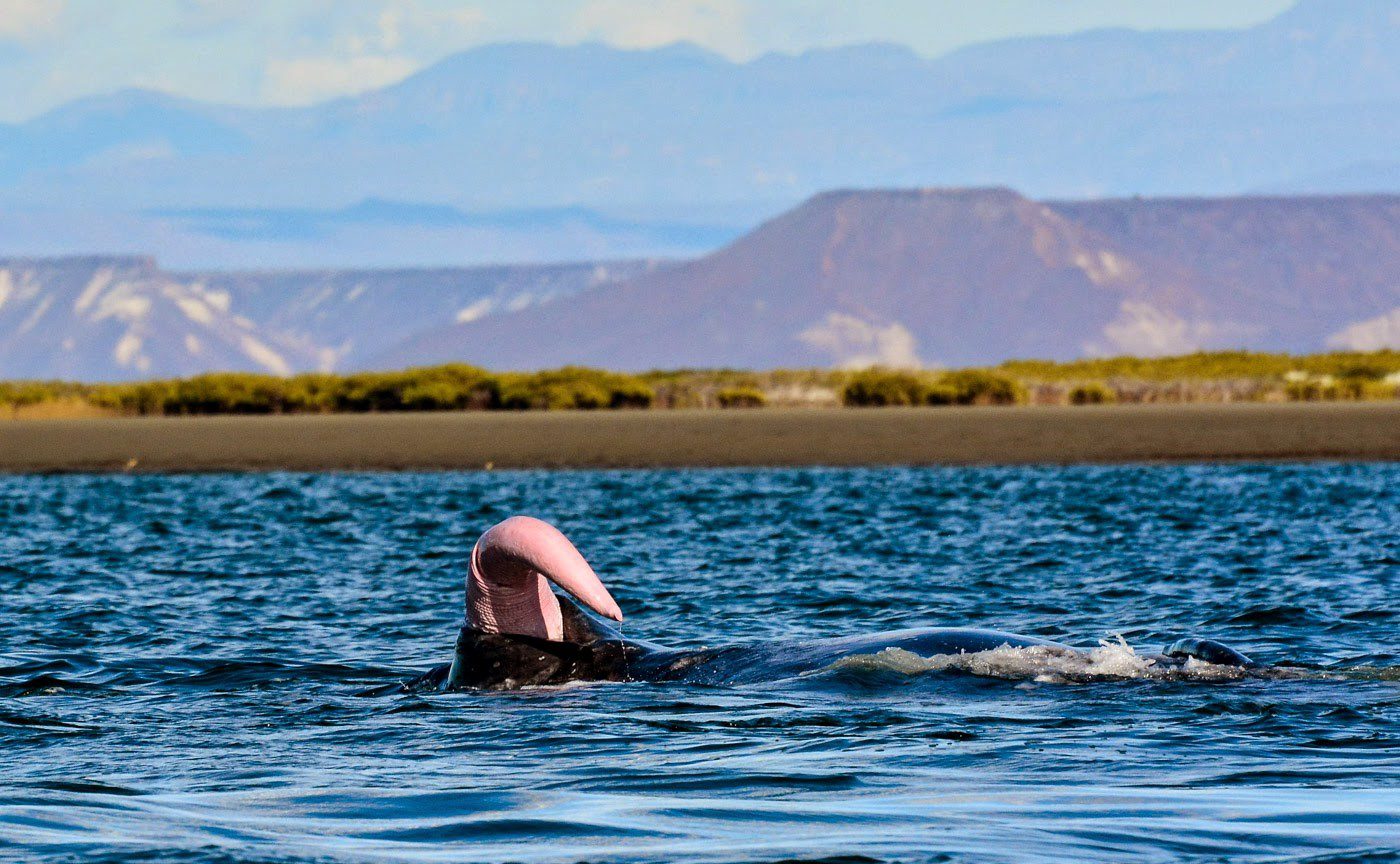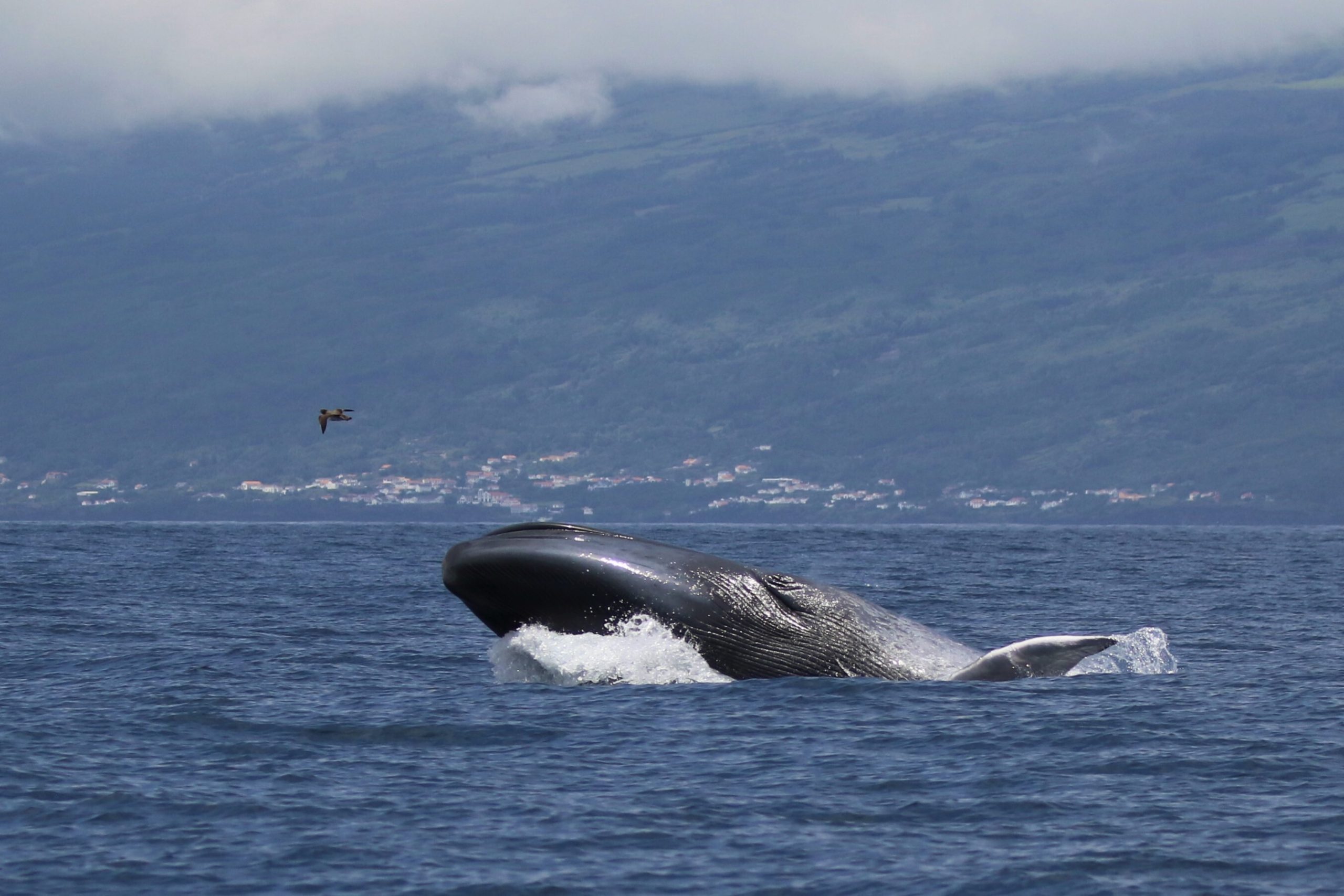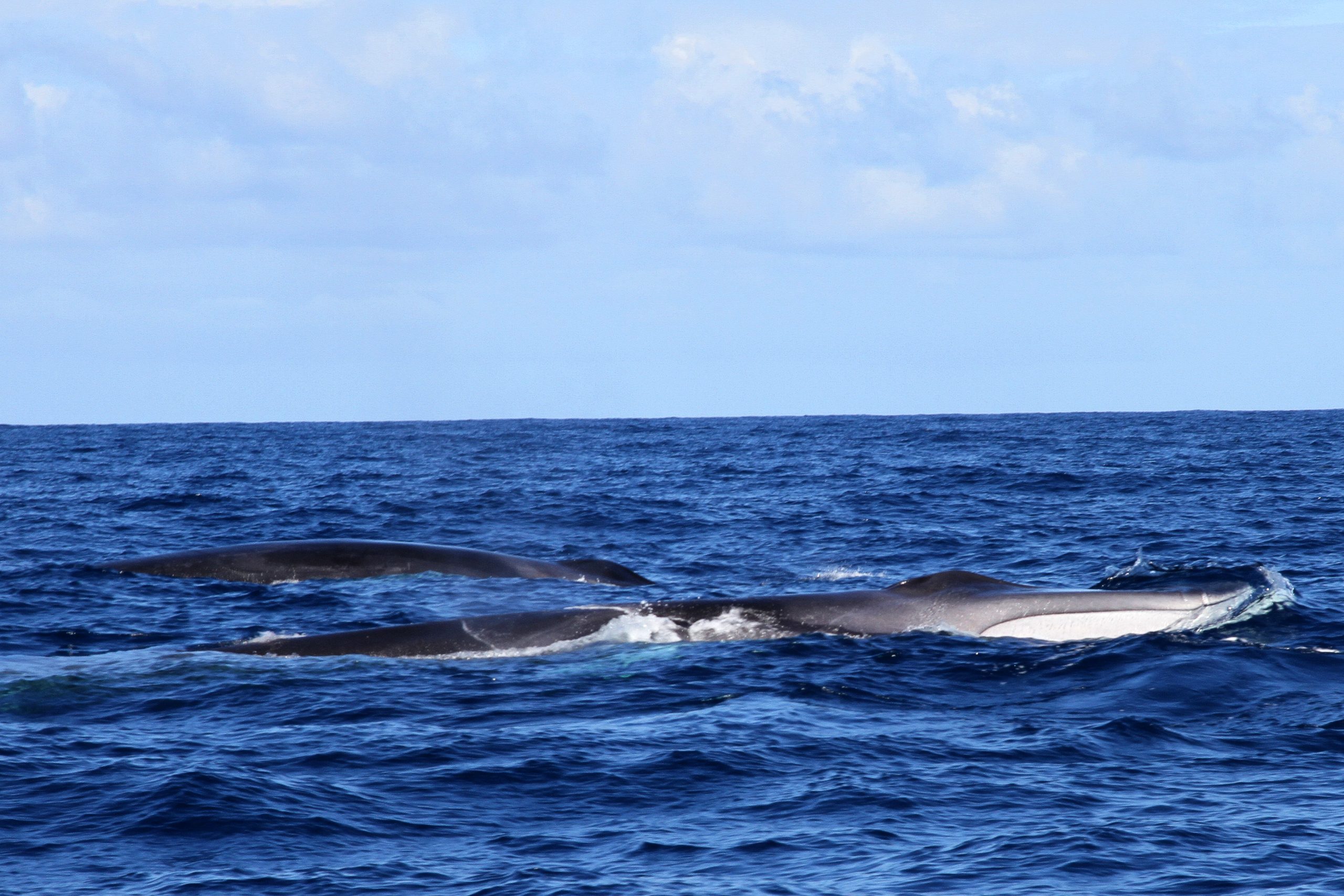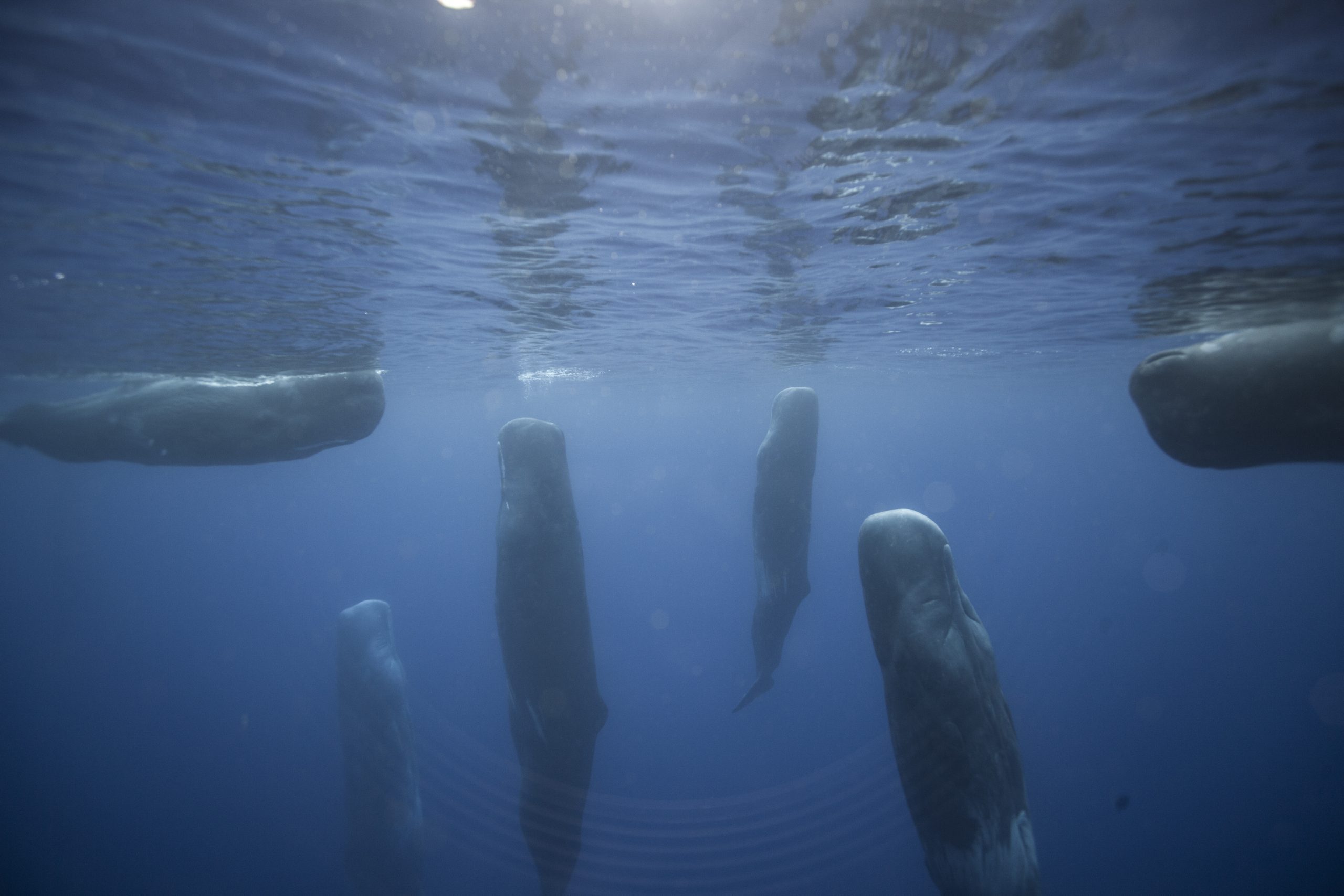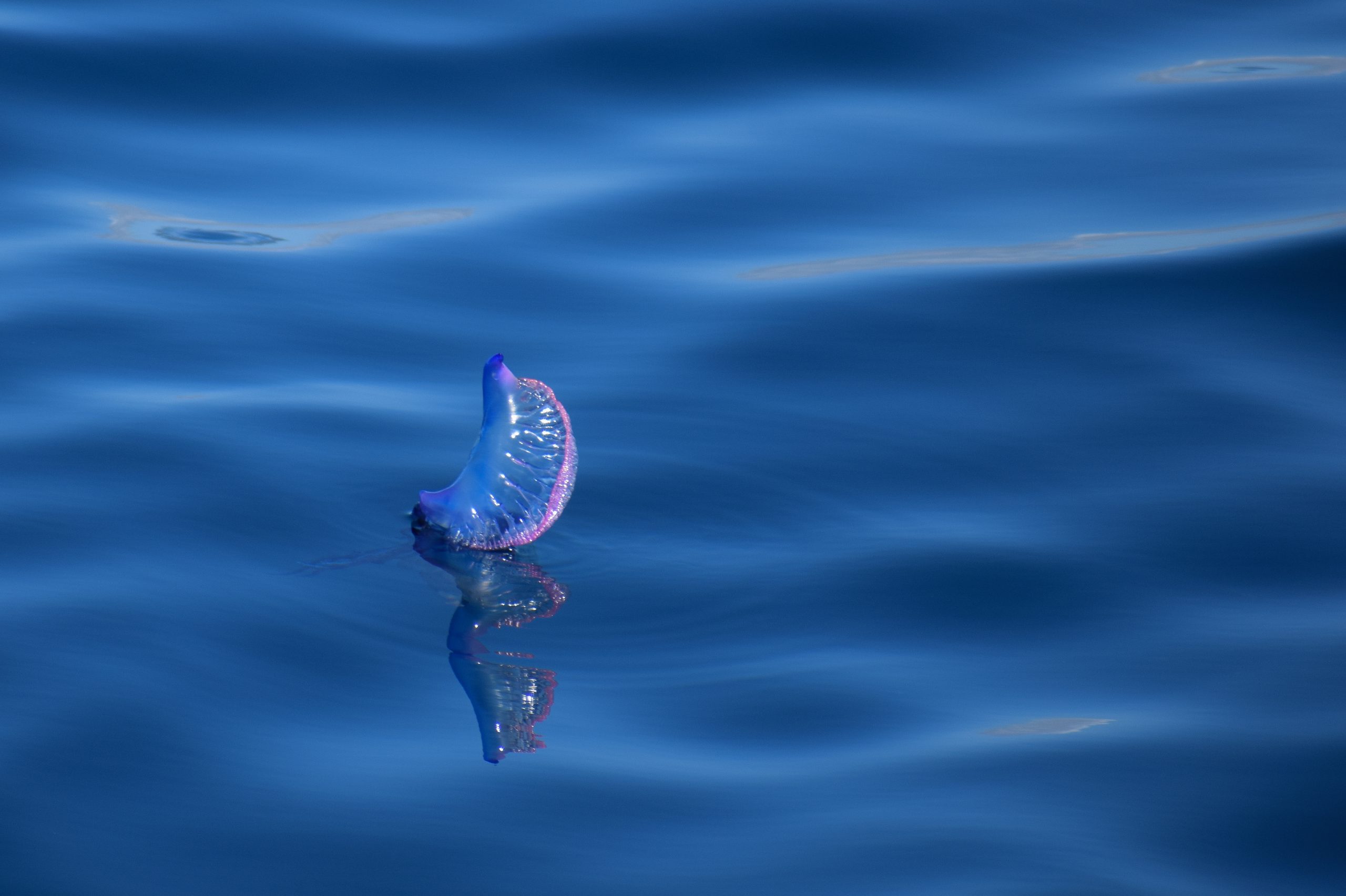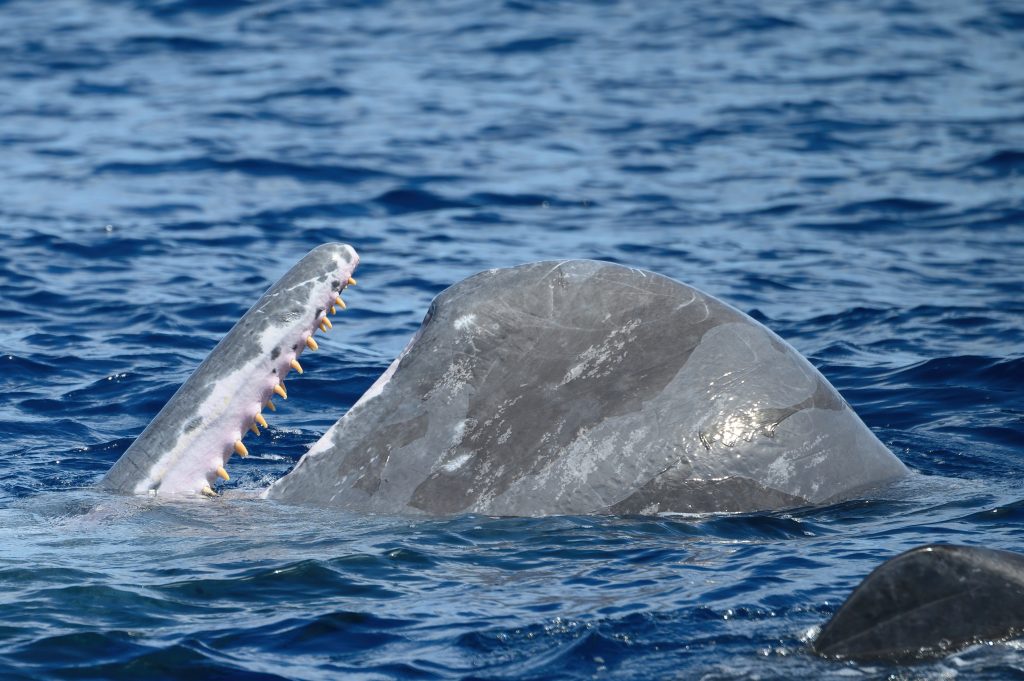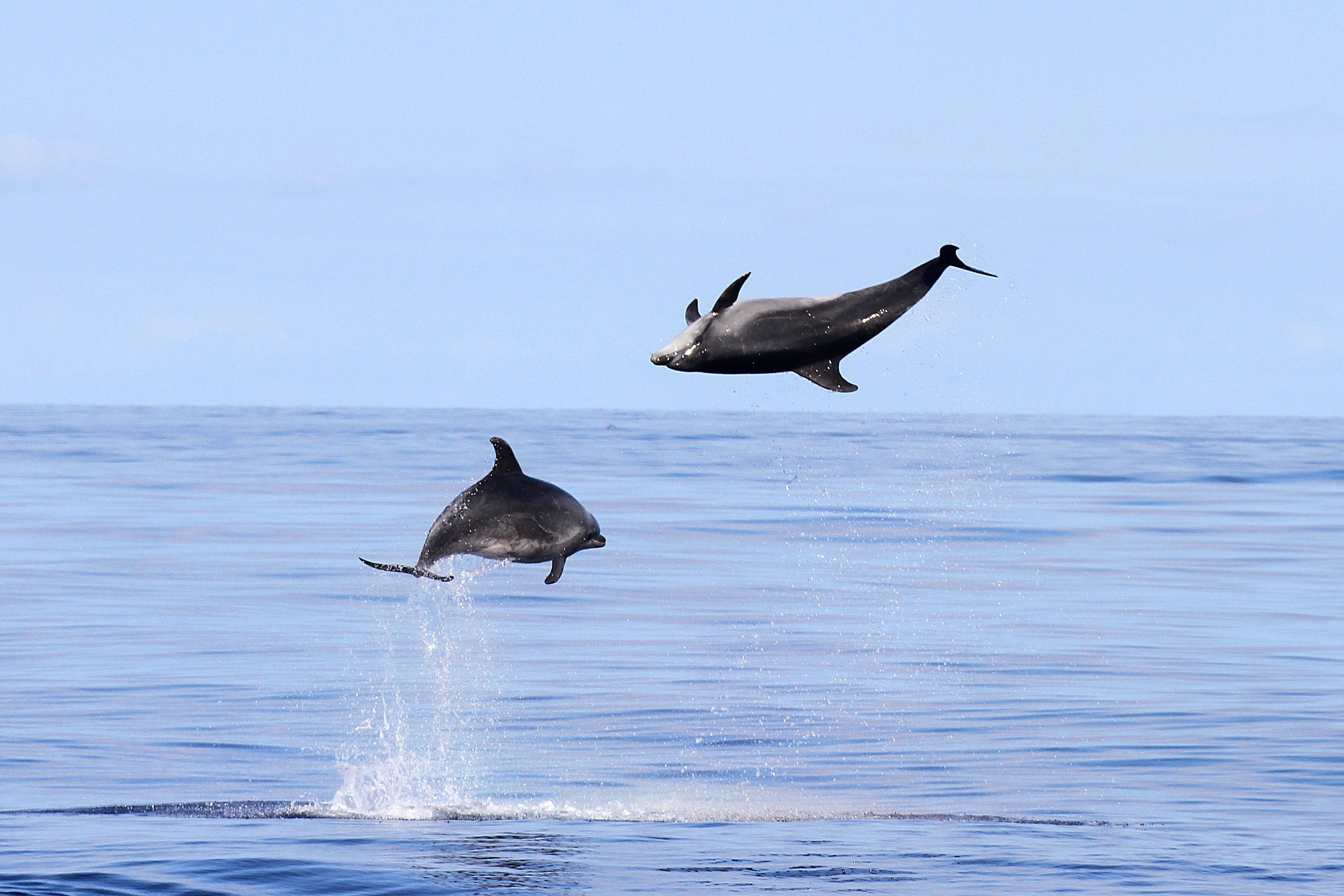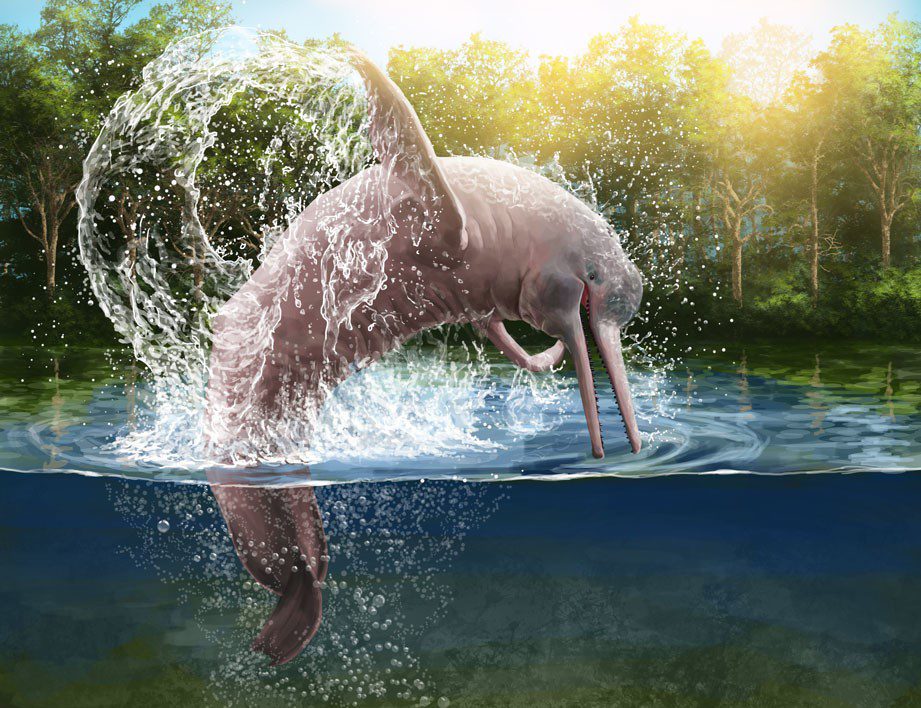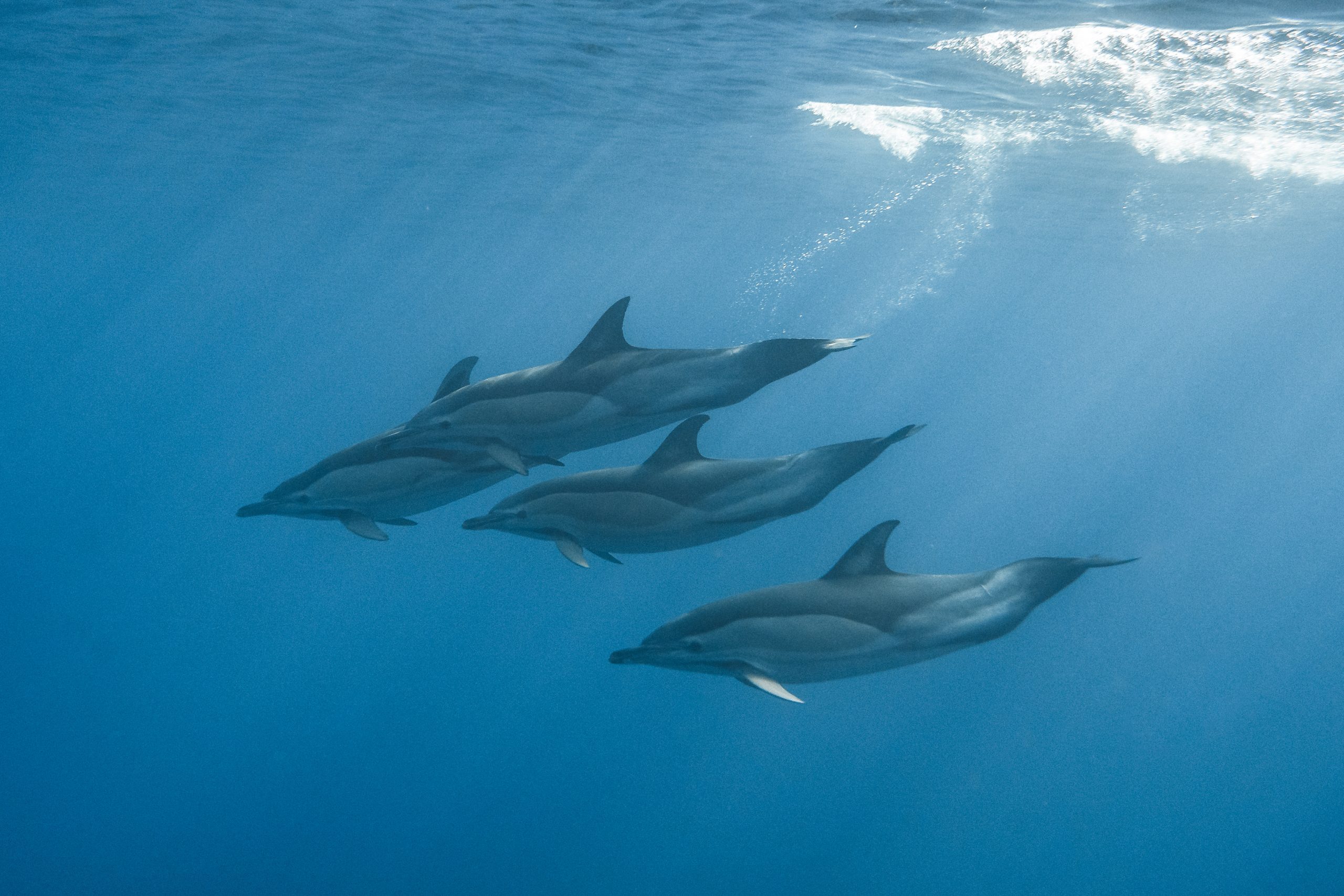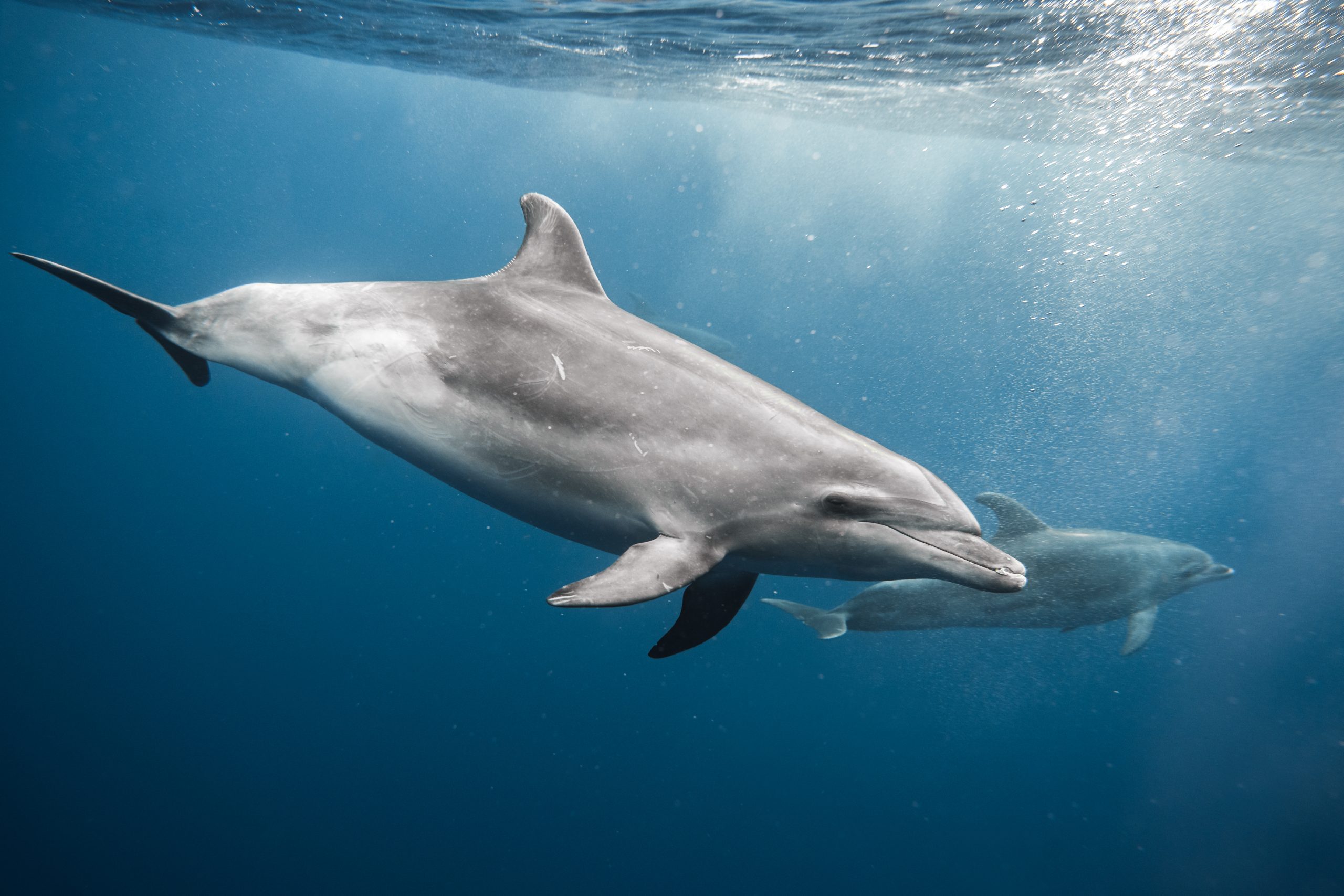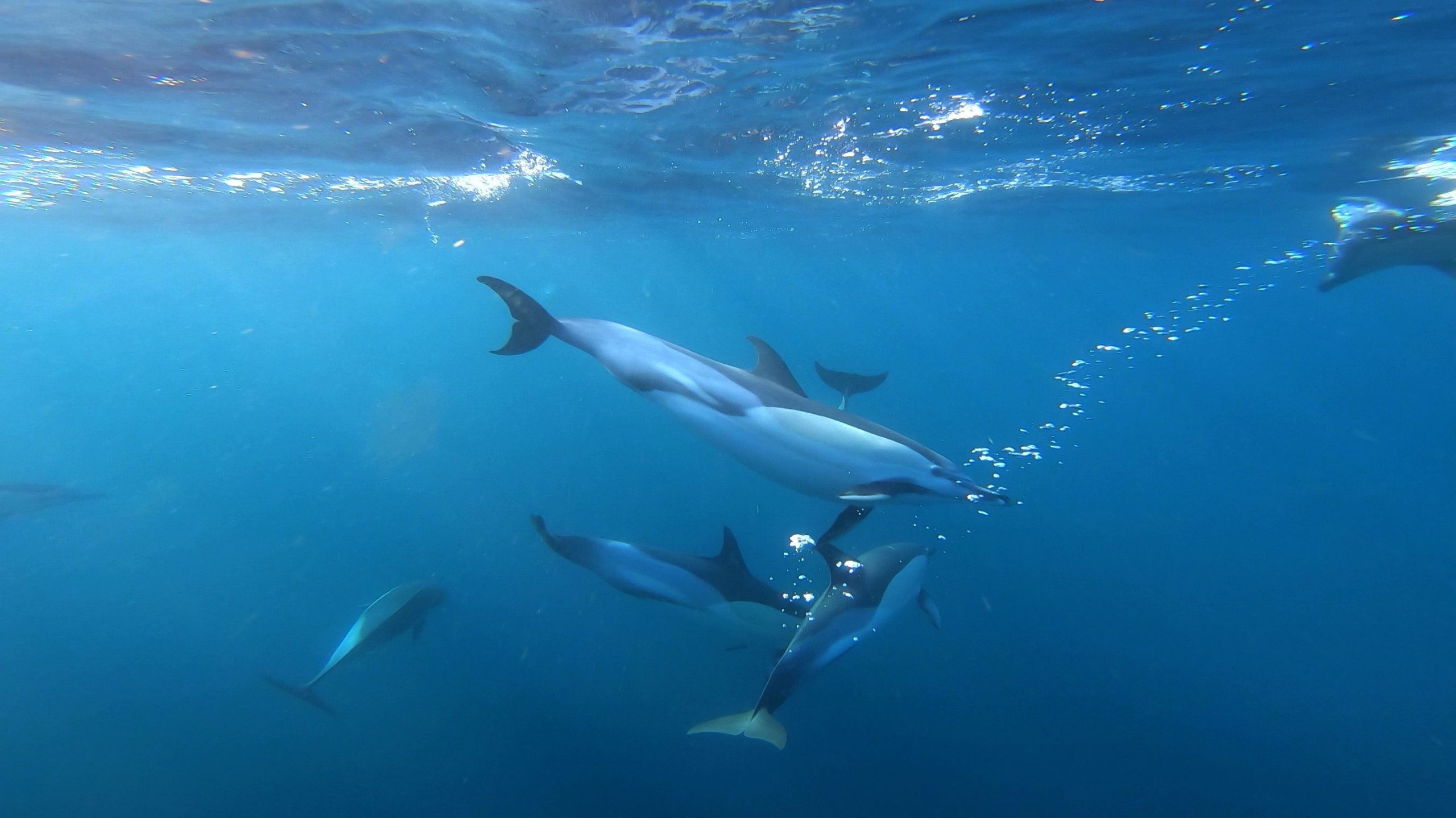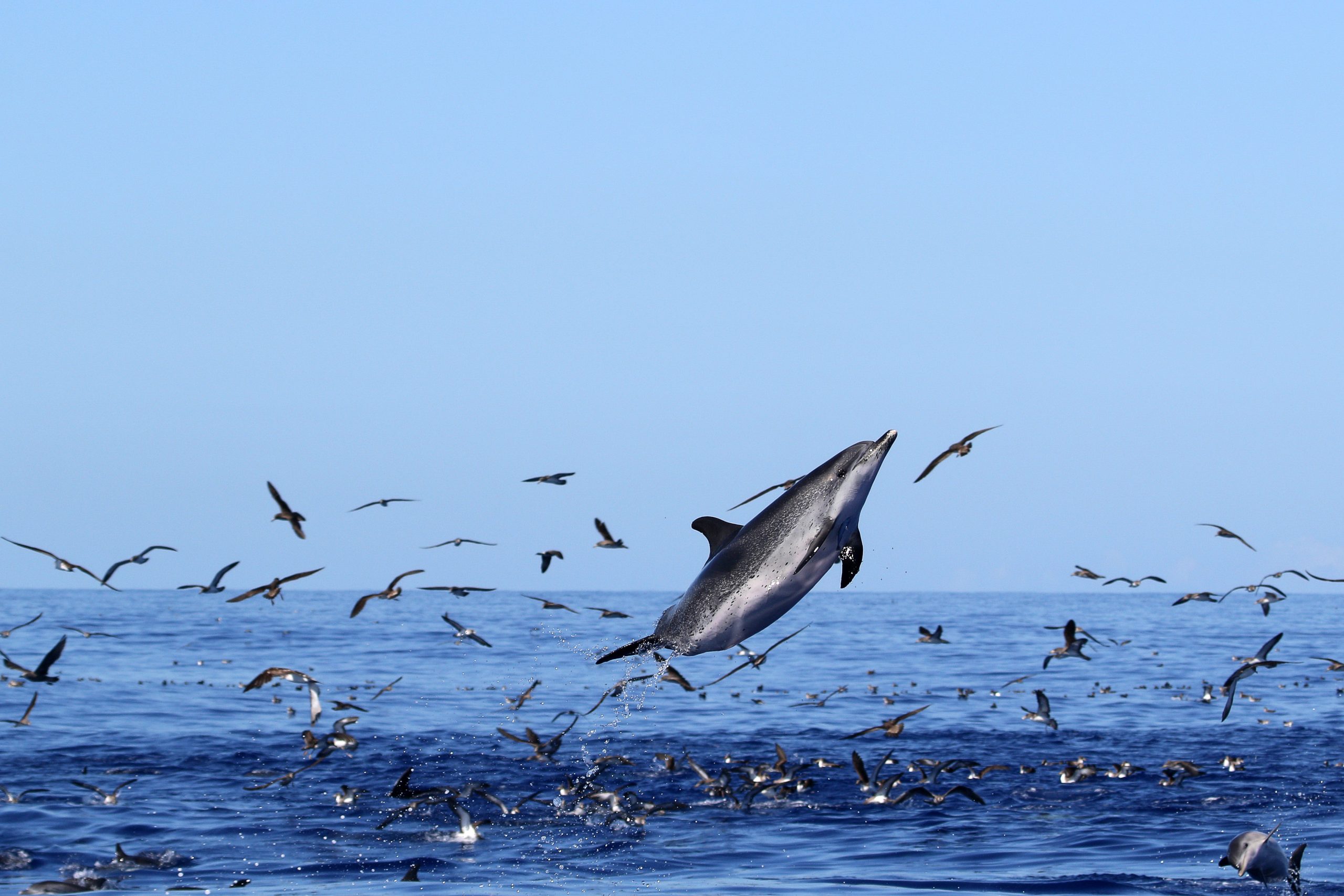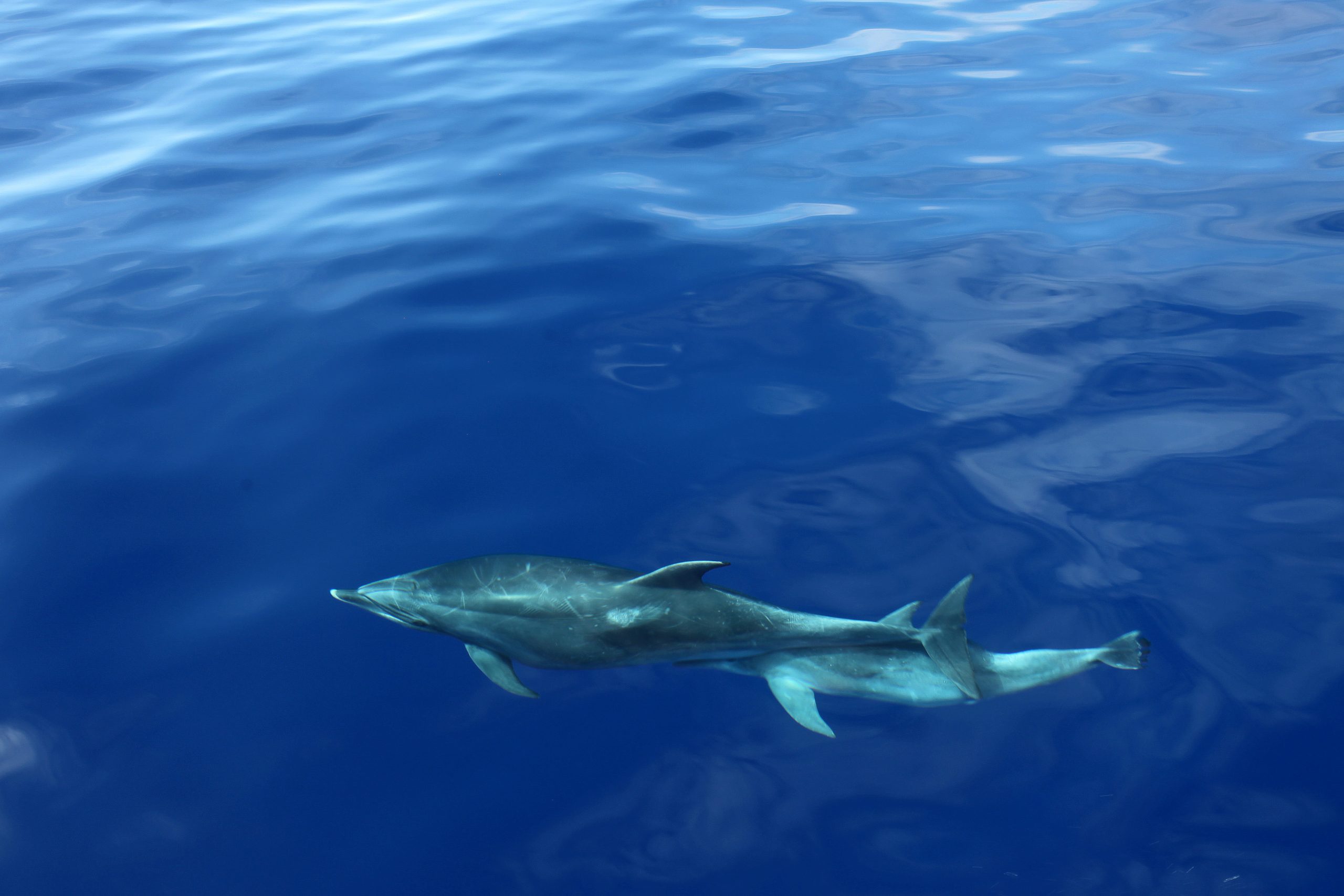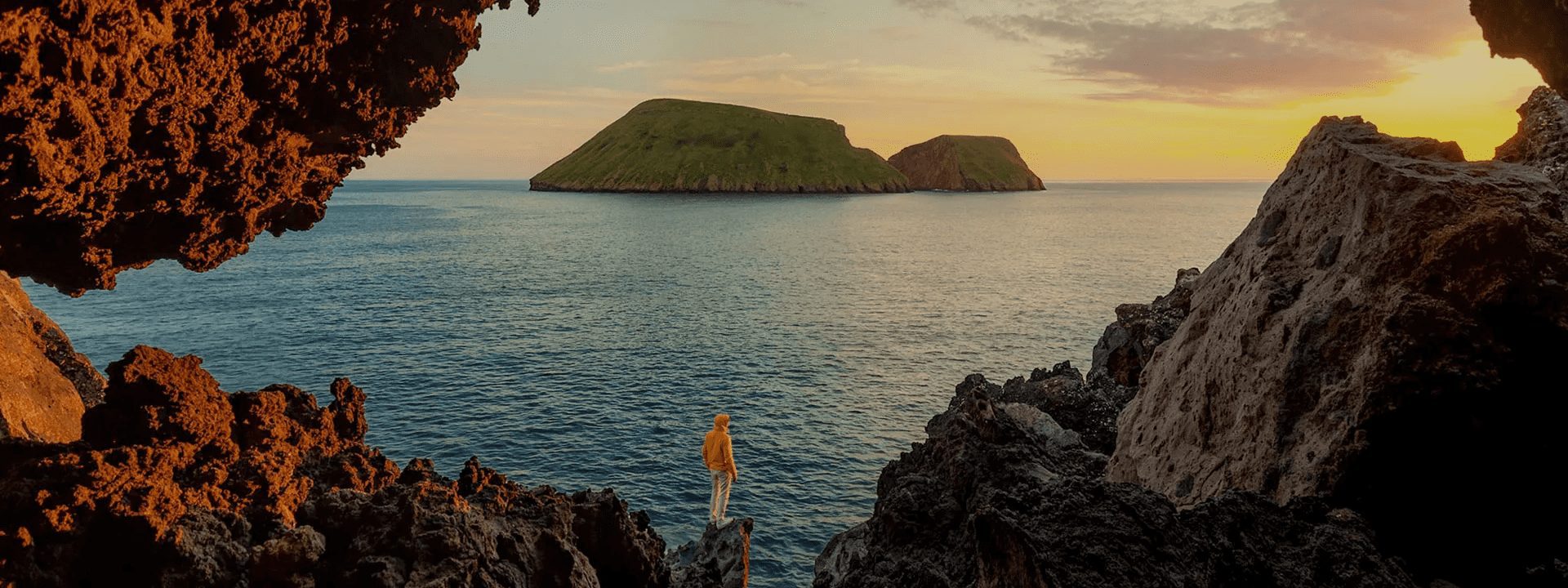Whales are the largest animals alive. Although considered slow-moving giants, they can swim really fast if needed. Do you know how fast whales can swim?
One key to their success is their absolutely extraordinary hydrodynamics. With a shape similar to that of a torpedo, these animals are very well-adapted to moving underwater. The following article will provide you with a detailed answer to the present question based on a scientific approach.
Characteristics That Impact A Whale’s Swimming Speed
Whales belong to the order Cetacea. Cetaceans are marine mammals fully adapted to life in the water. Defining characteristics include: “a streamlined body, flattened foreflippers, no hindlimbs, boneless tail flukes, an elongated skull, nasal openings on the top of the head, a dorsal fin or ridge, a thick layer of blubber and internal reproductive organs” (Carwardine, 2020).
Currently, 2 extant groups (sub-orders) of cetaceans exist: Odontoceti (toothed whales) and Mysticeti (baleen whales).

Toothed whales, as the name implies, have teeth in their jaws and hunt for their food. On the other hand, baleen whales have dense baleen plates rather than teeth and are filter feeders.
Both these cetacean groups have a few essential characteristics that allow for their excellent swimming capacity. They boast extraordinary hydrodynamics, aided by the fact that their forelimbs evolved into flippers, and their hindlimbs have been reduced to nothing. Furthermore, they are mainly hairless to minimize drag, and their neck vertebrae are fused to facilitate high-speed movement.

How Fast Can Whales Swim

So, given all this, how fast can whales actually swim? The truth is, it depends. However, according to some sources, there have been reports of whales reaching speeds of 60 km/h! This means that they can swim 6 times faster than Olympic recordist Michael Phelps and can even move faster than Usain Bolt’s top speed on land!
The specific speeds at which whales can swim depend on their particular activity. When traveling for long distances (e.g., migrating), they move at a slower, more efficient speed to conserve the most energy while covering the longest possible distance.
On the other hand, whales are also capable of short, high-speed bursts, for instance, when trying to catch certain prey items or when breaching. However, cetaceans only resort to such high-speed movements when strictly necessary or when in top physical condition, as, given their size, these bursts expend tremendous amounts of energy. So, let’s see with some examples of species how fast whales can swim.
Would you like to know the best times for whale watching?
Take a look at our whale watching calendar and plan your next adventure! Don’t miss the chance to spot these majestic creatures in Azorean waters. 🐋 🌊
Fastest Baleen Whales

- Sei whale: Literature suggests this species can reach up to 60 km/h in high-speed bursts! Most sources, however, point towards a more conservative estimate of 55 km/h (which is still incredibly fast), with cruising speeds that can reach 25 km/h. These speeds allow this whale to outpace any potential predators, such as killer whales!
- Blue whale: The largest animal to have ever lived, this species can reach speeds of 35 km/h, with literature even proposing that blue whales can attain bursts of up to 50 km/h! On the other hand, they usually cruise at 3-6 km/h, although they can travel at a sustained pace of 20 km/h.
- Fin whale: This species can reach bursts of speed of around 37-45 km/h! Thanks to its highly streamlined body, it can also reach cruising speeds of 30 km/h, which might be the fastest sustained travel pace of all baleen whales!
Fastest Toothed Whales
Unlike baleen whales, which filter-feed on large and dense clusters of small prey items, such as krill, toothed whales hunt their food, typically one prey item at a time. To complete this, they also need to be able to reach high speeds and have excellent maneuverability underwater.

- Common dolphin: This relatively small cetacean can reach speeds of up to 60 km/h in short bursts! It is one of the most commonly studied species of marine mammal, and the literature suggests that these animals cruise at speeds ranging from 6 to 20 km/h.
- Killer whale: The apex predator of the ocean, this species of the dolphin family can reach incredible speeds of 55 km/h! It is truly built to hunt. Although they travel at speeds of 5-10 km/h, these relentless animals can maintain speeds of 45 km/h when chasing prey.
- Dall’s porpoise: A keen bowrider, this animal can attain bursts of around 55 km/h, with sustained speeds of up to 20 km/h when riding the pressure waves formed by boats.
Whales’ Maximum Swimming Speed Compared With Other Marine Animals
It is often thought that, given the fact that fish underwent all of their evolutionary stages underwater, they are much better adapted for high-speed movement in this medium. Although most non-scientific articles point towards animals such as billfish, tuna, and sharks being much faster than any whale, this idea should be interpreted with caution.
As a matter of fact, there is a theoretical upper limit for marine animal speeds due to a phenomenon known as cavitation. Literature suggests that if speeds above 55 km/h are reached, vapor bubbles can form, and when this collapses, they can cause long-lasting damage to animal fins. This reasoning might explain why literature reporting cetacean speeds of over 55 km/h is so scarce, and the sei whale and common dolphin’s reported speeds of up to 60 km/h might be exceptional and uncommon, with potential risks for these animals.
That said, early records (ca. 1940s-1960s) claim that billfish, for instance, reach very high speeds—potentially over 100 km/h. This contradicts modern theoretical evidence and the most recent speed measurements for these (and other) fish species, with values that do not surpass the 55 km/h barrier. Regardless, the only clear thing is that current evidence on this topic can be contradictory and yet inconclusive!
In summary, contrary to popular belief, it might be possible that cetaceans are not far behind other marine species about their swimming prowess!
✨ Related articles: Are whales carnivores? | Do whales and dolphins lay eggs? | Does whale sperm make the ocean salty? | How do whales and dolphins communicate? | How do whales sleep? | How fast can whales swim? | How long can a Blue Whale hold its breath?
Video
Conclusion
In conclusion, science shows us that it can be rather challenging to crown the fastest whale, let alone the fastest marine animal. Existing data can be disputed, with new studies starting to contradict older ones and different study methodologies, making it difficult to reach a consensus.
Regardless, there is one thing that we can be sure of: whales have bodies that were built for underwater movement. And the most amazing is the fact that all the cetaceans featured in this article, except for the Dall’s porpoise, can be seen here in the Azores! Now you know how fast whales can swim!
If you would like to learn more about how to observe these beautiful cetacean species in the Azores, join Futurismo on your next vacation. We will be glad to welcome you and introduce you to these magnificent creatures.
References
- Berta, A. (Ed.). (2015). Whales, dolphins, and porpoises: A natural history and species guide. University of Chicago Press.
- Block, B. A., Booth, D., & Carey, F. G. (1992). Direct measurement of swimming speeds and depth of blue marlin. Journal of Experimental Biology, 166(1), 267-284.
- Bush, N. (2007). Spatio-temporal Comparisons Between Acoustic and Visual Detection of the Short-Beaked Common Dolphin (Delphinus Delphis) in the St. George’s Channel, in Relation to Environmental Features (Doctoral dissertation, University of Wales Bangor).
- Carwardine, M. (2019). Handbook of whales, dolphins and porpoises. Bloomsbury Publishing.
- NOAA. (n.d.). Dall’s Porpoise. (n.d.). NOAA. Retrieved February 18, 2022, from https://www.fisheries.noaa.gov/species/dalls-porpoise.
- Domenici, P., Wilson, A. D. M., Kurvers, R. H. J. M., Marras, S., Herbert-Read, J. E., Steffensen, J. F., … & Krause, J. (2014). How sailfish use their bills to capture schooling prey. Proceedings of the Royal Society B: Biological Sciences, 281(1784), 20140444.
- Iosilevskii, G., & Weihs, D. (2008). Speed limits on swimming of fishes and cetaceans. Journal of The Royal Society Interface, 5(20), 329-338.
- Marras, S., Noda, T., Steffensen, J. F., Svendsen, M. B., Krause, J., Wilson, A. D., … & Domenici, P. (2015). Not so fast: swimming behavior of sailfish during predator–prey interactions using high-speed video and accelerometry. Integrative and comparative biology, 55(4), 719-727.
- Segre, P. S., Potvin, J., Cade, D. E., Calambokidis, J., Di Clemente, J., Fish, F. E., … & Goldbogen, J. A. (2020). Energetic and physical limitations on the breaching performance of large whales. Elife, 9, e51760.
- Still, R., Harrop, H., Dias, L., & Stenton, T. (2019). Europe’s Sea Mammals Including the Azores, Madeira, the Canary Islands and Cape Verde. Princeton University Press.
- Svendsen, M. B., Domenici, P., Marras, S., Krause, J., Boswell, K. M., Rodriguez-Pinto, I., … & Steffensen, J. F. (2016). Maximum swimming speeds of sailfish and three other large marine predatory fish species based on muscle contraction time and stride length: a myth revisited. Biology open, 5(10), 1415-1419.
- Wardle, C. S., Videler, J. J., Arimoto, T., Franco, J. M., & He, P. (1989). The muscle twitch and the maximum swimming speed of giant bluefin tuna, Thunnus thynnus L. Journal of fish biology, 35(1), 129-137.




